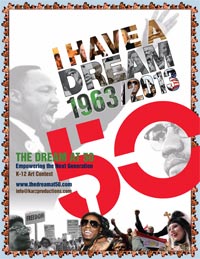
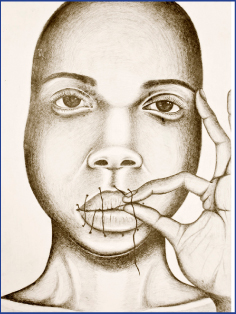
"No More Silence," Song Choi
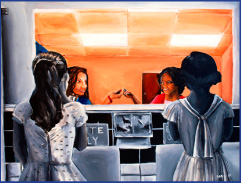
"The Past Meets Present," Saul Palos
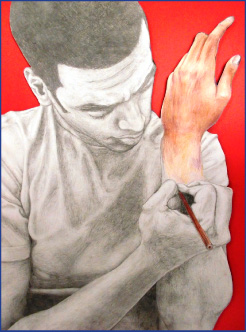
"How the CRM Moves Me," E. Tewdros
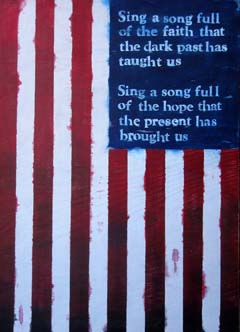
"The 13 Percent," Mia Bomar

"Solace in Birmingham," Kelly Moore
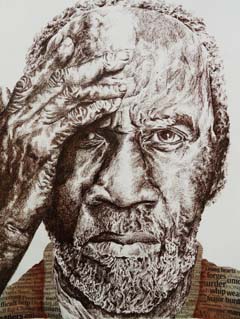
"Dogged Warrior," Monica Machado
"Racial Dualism," video short recommended for high school students featuring David Brion Davis, Orlando Patterson, and David Driskell, from Legacy: Black & White in America
"Slavery & Democracy," video short recommended for high school students featuring John Hope Franklin, Ira Berlin, Joseph Ellis, James O. Horton, and David Brion Davis, from Legacy: Black & White in America
"Lessons from my Mother," video short featuring Roger Wilkins, Andrew Young, Marian Wright Edelman, and Rev. Joseph Lowery, from Legacy: Black & White in America
"The Legacy," video short featuring high school students from the Kenwood Academy, Chicago
"Race and Art," video short featuring Kerry James Marshall and Hank Willis Thomas, from Legacy: Black & White in America
"Legacy: Black and White in America," trailer for the PBS documentary special produced by Richard Karz.

Summary
Fifty years ago, Martin Luther King, Jr. had a dream for America where people would be judged by the content of their character rather than by the color of their skin, where little black boys and black girls would be able to join hands with little white boys and white girls as sisters and brothers. Fifty years later, America is no doubt a very different nation than it was in 1963, especially concerning the rights of African Americans and racial integration. Yet the widening disparity of wealth and deepening social tensions that precipitated the March on Washington are as topical today as they were in the sixties and suggest that the underlying conflicts and tensions in the American dream that erupted in the sixties, conflicts and tensions that had been festering since the Founding, remain unresolved.
Inspired by the Declaration of Independence and forged by the Black experience in America, the modern Civil Rights Movement was a philosophy of life designed to address these inconsistencies in American democracy. It was a philosophy of humility and hope, of pragmatism and idealism, and of individualism and the Beloved Community, indeed a second American revolution, that aspired to integrate the divided soul of the nation and inaugurate a new era of progress and possibility.
Fifty years later, as the nation and the world face daunting social, political, and environmental challenges that demand a "new" paradigm, a new vision, for how we can relate to each other as human beings, the timing could not be better to revisit The Dream Speech and the wisdom of the Civil Rights Movement.
The goal of THE DREAM@50 Art Contest is to embrace the arts as a vehicle for bringing this history alive for students today in order to clarify the lessons of the past and to empower our students with the tools to make a difference and make the dream a reality.

Notes on The Dream Speech
The below Classroom Discussion Questions are to help students see The Dream Speech in the larger context of Dr. King's worldview of humility and hope and how it relates to today. The aim is to make history real for students in order to clarify the parallels between the sins of the past (e.g., the sins of racial discrimination and segregation) and the sins of the present, e.g., of greed, arrogance, and bullying. The lesson is that nobody is perfect and realizing the dream is a never-ending, always difficult, enterprise.
Preparing for THE DREAM@50 Art Contest should be an exercise in learning to talk to each other and learn from each other. It should be about strengthening the classroom (and the community) through the appreciation and celebration of difference. This is about balancing individual pride and humility, self-interest and the public interest. It is about growing up and becoming responsible, productive, complete, and mature human beings in an open-minded, creative, dynamic, and fully inclusive society. It is about empowerment through expression, finding one's true voice and the courage of conviction through engagement with the world. Finally, it is about managing the conflicts and divisions that have defined our past and that jeopardize our future in order to realize the promise of democracy for everyone.
Classroom Discussion Questions
"Deeply Rooted in the American Dream": King's View of Democracy
- What do you think about The Dream Speech? What do you like about the speech? What do you dislike?
- What is the genius of the speech? What is most striking about the speech? Delivery? Phrasing? Flow? Content? Attitude?
- How does the speech make you feel? Angry? Indignant? Ashamed? Sad? Proud? Hopeful? Conflicted? Why?
- Did reading or hearing the speech change you in any way? Did it change how you see racial equity in America?
- Is the dream still relevant? Has the world changed since 1963? How so? How not?
- What are the phrases or ideas that most stand out in your mind from the speech? What do they mean to you? Do you judge people only by the content of their character? Should people be judged only by the content of their character? Is physical appearance irrelevant to how people should be judged? Is ethnicity or race irrelevant to character?
"We Cannot Walk Alone": Integration and the Beloved Community
- What does the world of the future look like in Dr. King's dream? How do people behave toward one another? Is it a different world from the one you know? How so? Does race or nonconformity have a future in King's America? Should it? Why?
- Is Dr. King's dream realistic? What does the evidence suggest?
"The Fierce Urgency of Now": Prospects for Change
- What have you learned about the world, and about justice, from the speech?
- What have you learned from the speech about how to make the world a better place? How does this apply to your role in the world as an artist?
- What would Dr. King think about America today? What would he think about you?
- Can you think of anyone who personifies the ethos required for realizing the dream? What are they like? How are you and aren't you like them? Do you aspire to be like them?
- Are you optimistic for the future? If so, why?
- What, in a nutshell, is the Dream about?
Resource Documents and Videos
Race and the Divided Soul of America
Excerpts from selected documents on the culture of racial schism
- Founding Brothers, Joseph Ellis
- The Souls of Black Folk, W. E. B. Du Bois
- Black Skin, White Masks, Frantz Fanon
- The Omni-Americans: Black Experience and American Culture, Albert Murray
- The White Man's Burden: Historical Origins of Racism in the United States, Winthrop D. Jordan
- The Brothers Karamazov, Fyodor Dostoyevsky
- Blues People: Negro Music in White America, LeRoi Jones
- Dreams from My Father, Barack Obama
- The Cross and the Lynching Tree, James Cone
- The Shape of Things to Come: Prophecy and the American Voice, Greil Marcus
Precursors to the Civil Rights Movement
- The Civil Rights Movement in Philadelphia
- Declaration of Independence, Thomas Jefferson
- New York Public Library, A New Nation (illustrations relating to early American history)
- Serenity Prayer, Reinhold Niebuhr
- Harlem Renaissance, the New Negro, and Alain Locke
- Library of Congress, From Slavery to Civil Rights (timeline and teacher resource materials)
- Schomburg, Images of African Americans in the 19th Century
- Library of Congress, Images of 20th Century African American Activists
- Lessons from My Mother, Rev. Joseph Lowery (video short)
The Dream Speech and the Sixties
- Draft of "I Have a Dream" (the King Center)
- Annotated "I Have a Dream" speech
- "'I Have a Dream...' Peroration by Dr. King Sums Up A Day the Capital Will Remember," James Reston, New York Times, August 29, 1963.
- The March on Washington. Schomburg, African Americans and American Politics
- Lesson Plan for The Dream Speech
The Legacy
Teacher Lesson Plans & Blogs
Debi West, Visual Art Department Chair, North Gwinnett High School
Suzette Spinelli, Lassiter High School, Fine Arts Program
Special Thanks to: Library of Congress, New York Public Library, Columbia University's Amistad Digital Resource, and the Morehouse King Collection.

